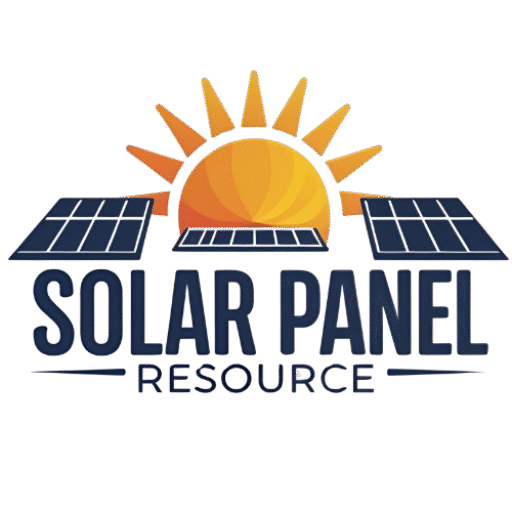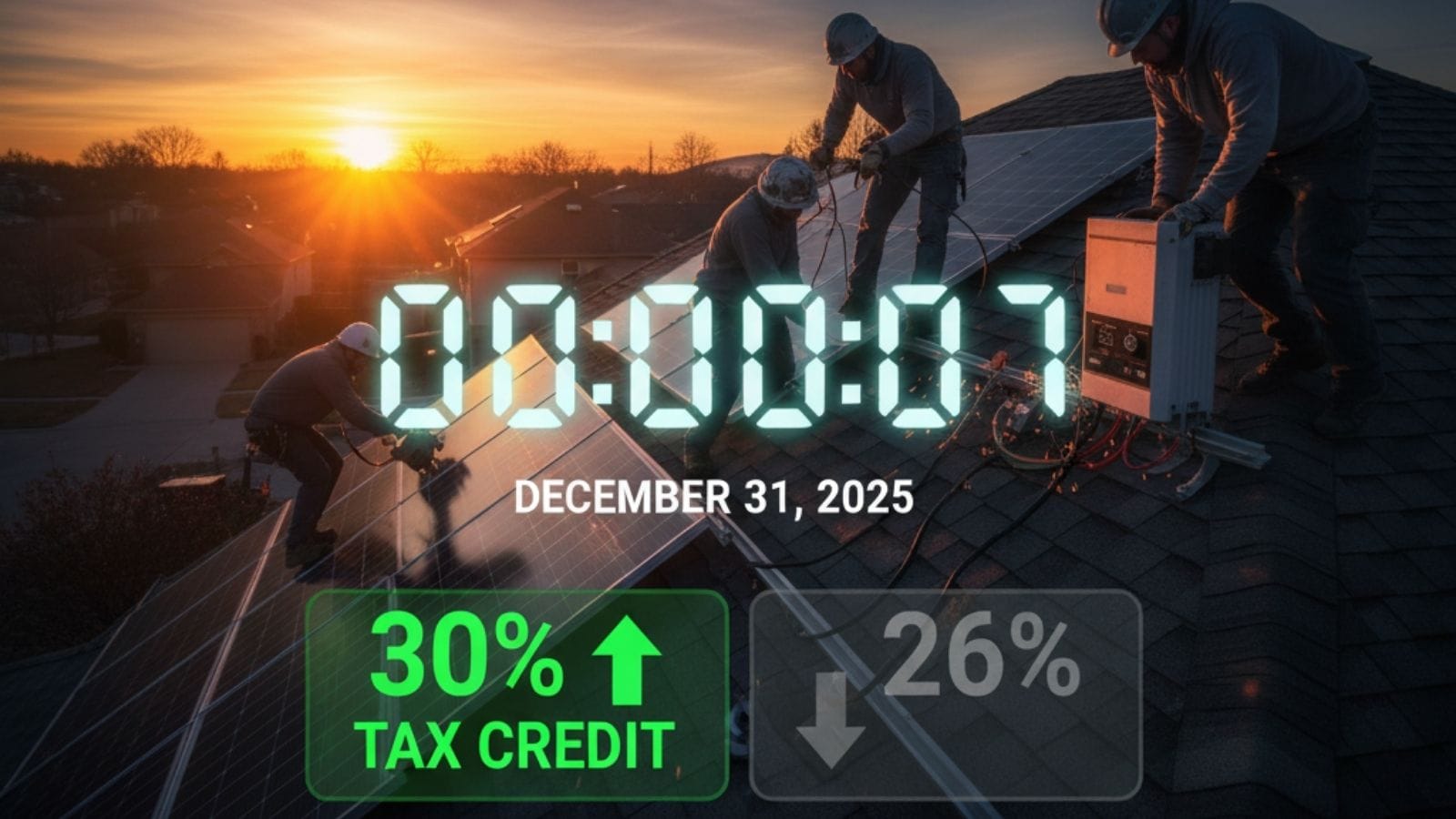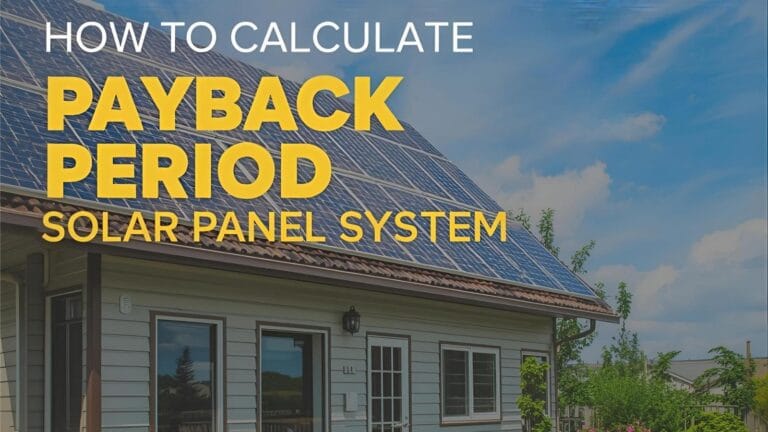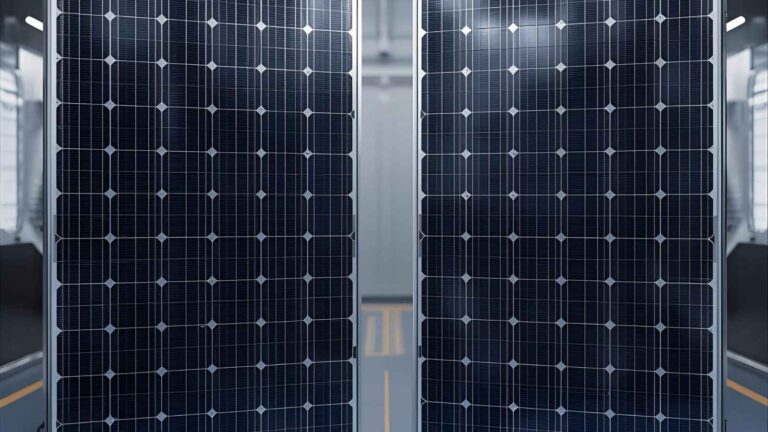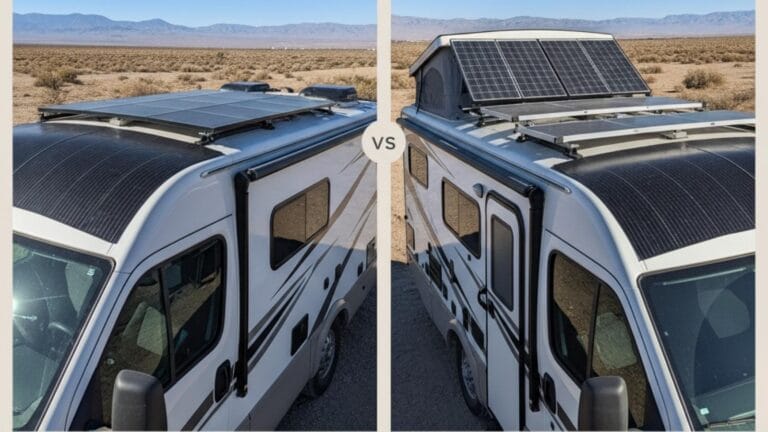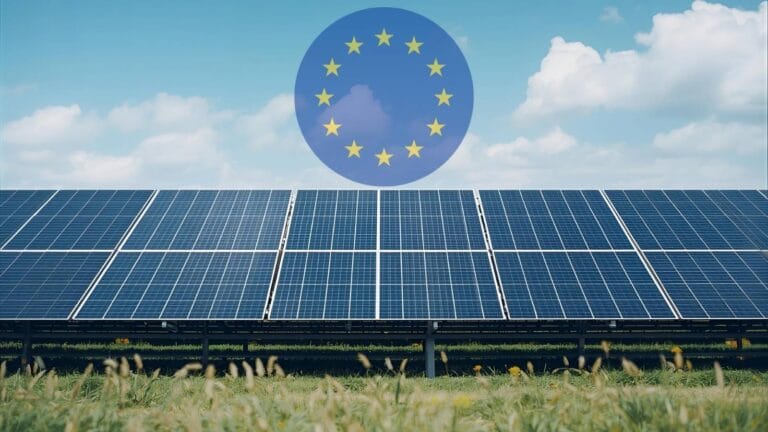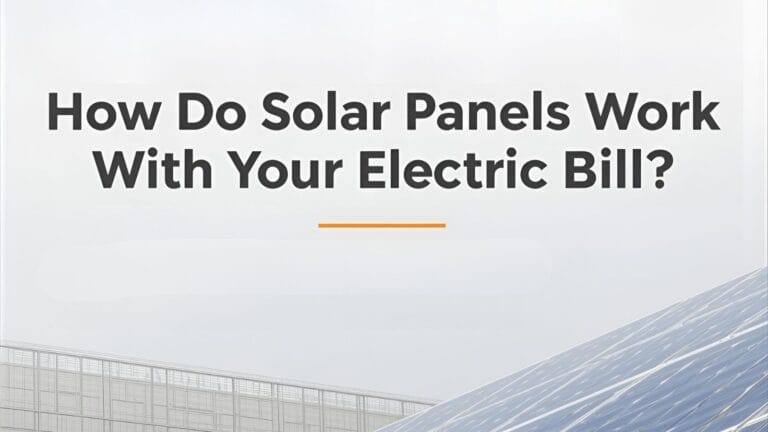The Final Countdown: Why Your Solar System Must Be Installed Before December 31, 2025
If you’re a homeowner or business owner considering a solar energy system, a critical deadline is looming. While solar is a long-term investment, the short-term economics are heavily influenced by a key factor: the Federal Solar Tax Credit. For a solar installation completed in 2025, you are eligible for a generous 30% tax credit. However, this rate is set to decrease in 2026, marking a significant change in the financial landscape of going solar.
This comprehensive guide will explain exactly why the date December 31, 2025 is so important. We’ll delve into the financial implications, the installation timeline, and a clear action plan to help you secure the highest possible savings. Our goal is to provide a clear, expert perspective on why timing is everything when it comes to maximizing your solar investment.
The 2025 Solar Tax Credit: A 30% Opportunity
The Residential Clean Energy Credit, commonly known as the Federal Solar Tax Credit, is a powerful incentive designed to make renewable energy more accessible. The credit allows you to deduct a percentage of your total solar system cost directly from your federal income tax bill. It’s a dollar-for-dollar reduction, not just a deduction from your taxable income. This distinction makes it one of the most valuable incentives available to U.S. taxpayers.
Understanding the Tax Credit Step-Down Schedule
The 30% tax credit rate is a result of the Inflation Reduction Act of 2022, which extended and increased the credit from its previous levels. However, this high rate is not permanent. The current schedule is as follows:
- 2022 – 2032: 30% tax credit
- 2033: 26% tax credit
- 2034: 22% tax credit
After 2034, the credit is scheduled to be eliminated for residential systems unless Congress takes further action. The drop from 30% to 26% in 2026 represents a substantial reduction in your potential savings. For a standard residential system costing $25,000, this 4% difference equates to a $1,000 loss in savings. For larger, more complex systems or commercial projects, the lost savings can amount to thousands of dollars.
What Qualifies for the 30% Rate?
To be eligible for the 30% tax credit, your solar energy system must be “placed in service” by December 31, 2025. The term “placed in service” is critical. It means that the system must be installed, fully operational, and connected to the electrical grid. Simply signing a contract or starting the installation process in 2025 is not enough. The project must be completed and generating power before the year ends to qualify for the higher credit rate.
Eligible costs include not only the solar panels but also:
- Labor for installation
- Mounting equipment and wiring
- Inverters
- Energy storage devices (solar batteries)
This means your battery storage, a key component for energy independence, must also be installed and working by the deadline to get the full 30% credit on its cost.
The Installation Timeline: Why Time is Running Out

The solar installation process is not instantaneous. From the moment you contact an installer to the day your system is activated, there are a series of steps that take time. This is why waiting until the last minute is a significant risk that could cost you thousands in lost tax credits. Understanding this timeline is the first step in avoiding a costly mistake.
Phase 1: Research and Consultation (1-4 Weeks)
The journey begins with your research. You’ll need to find reputable installers, get multiple quotes, and have a detailed consultation to determine the right system size and design for your home’s energy needs. This phase involves site visits, energy audits, and contract reviews, all of which can take several weeks.
Phase 2: Permitting and Design (4-8 Weeks)
Once you sign a contract, your solar installer will begin the process of creating a detailed system design and applying for the necessary permits from your local municipality and utility company. This is often the longest and most unpredictable part of the process. Permitting times vary significantly by location and can be affected by local government backlogs and specific utility requirements.
Phase 3: Equipment Procurement (2-4 Weeks)
After permits are approved, your installer will order your specific equipment, including panels, inverters, and racking. While the solar industry has a robust supply chain, unexpected delays in manufacturing or shipping can occur, especially with a surge in demand as the end-of-year deadline approaches.
Phase 4: Installation and Interconnection (1-3 Weeks)
The physical installation on your roof is typically the fastest part of the process, often taking just a few days. However, the final step—utility interconnection—is entirely dependent on your local utility company. The utility must inspect and approve the system before giving you permission to operate it (P.T.O.). A single failed inspection or a scheduling delay on the utility’s end can push your project past the December 31 deadline.
As you can see, a typical solar installation from consultation to a fully operational system can take anywhere from 10 to 20 weeks. This means that to be safe, you should be engaging with a solar company by late summer or early fall at the absolute latest to ensure your project is completed in time for the 30% tax credit.
Common Mistakes and How to Avoid Them
With a deadline this important, a few common missteps could cost you your savings. Being aware of these pitfalls can help you navigate the process smoothly and successfully.
Mistake #1: Underestimating the Timeline
Many homeowners assume installation is a quick process, like a simple appliance delivery. As we’ve outlined, the reality is a multi-phase project with a number of potential delays. Action Plan: Start the process early. Aim to have a contract signed by early fall to give your installer ample time to handle permitting and any unforeseen issues. Don’t wait until November or December.
Mistake #2: Not Verifying Your Installer’s Experience
The solar industry has seen rapid growth, and not all installers are created equal. An inexperienced company may be more prone to delays, errors in permitting, or failed inspections. Action Plan: Research your installer thoroughly. Check for certifications, read customer reviews, and ask for proof of their experience in your local area. A seasoned professional understands the local permitting process and has a strong relationship with the utility company, which can be invaluable.
Mistake #3: Relying on Verbal Guarantees
A solar salesperson might promise a quick installation, but this is not a guarantee. The only date that matters is the “placed in service” date. Action Plan: Ensure your contract explicitly states a firm timeline for the installation and specifies that the installer will take all reasonable steps to meet the December 31, 2025 deadline. Understand the terms and conditions and what happens in the event of a delay on the installer’s end.
As the deadline approaches, the demand for solar installations will surge. This increased volume can strain installers, utility companies, and permitting offices, making the entire process slower. The best way to beat the rush is to act proactively and begin your solar journey now.
The U.S. government, through the Department of Energy, provides valuable resources to help homeowners understand the solar process and the incentives available. Consulting these resources can provide you with a second layer of authority on the importance of this deadline. For a list of all current federal and state incentives, visit the Database of State Incentives for Renewables & Efficiency.
Source: DSIRE (Database of State Incentives for Renewables & Efficiency)
Maximizing Your Investment: The Big Picture

While the looming deadline for the 30% tax credit is the immediate concern, it’s important to remember that solar is a long-term investment that provides a range of benefits beyond a single tax credit. The immediate financial gain is significant, but the long-term value is even greater.
Long-Term Financial Benefits:
- Reduced or Eliminated Utility Bills: Once your system is operational, you’ll generate your own electricity, drastically lowering your monthly energy costs.
- Increased Home Value: A solar-powered home is a more valuable home. Studies consistently show that homes with solar panels sell faster and for more money than comparable homes without them.
- Energy Independence: You become less vulnerable to rising electricity prices and grid instability, giving you greater control over your energy future.
The transition from a 30% to a 26% tax credit represents a clear and tangible cost increase for a solar system in 2026. The only way to lock in the highest possible savings is to ensure your project is fully completed and operational by the end of 2025. This is the final countdown to a financial opportunity that won’t be repeated in the foreseeable future.
Final Thoughts and Your Action Plan
The window of opportunity to claim the full 30% federal solar tax credit is closing. The deadline is firm, and the installation process takes time. Waiting until late in the year is a high-risk gamble that could result in losing thousands of dollars in savings. The time to act is now.
Here’s a simple action plan to ensure you don’t miss the deadline:
- Start Now: Begin your research and get quotes from multiple installers immediately.
- Verify and Choose: Select a certified, experienced installer who can provide a realistic timeline.
- Stay Engaged: Follow up with your installer to ensure permits are progressing and there are no unforeseen delays.
Your solar journey is not just about saving money; it’s about investing in a sustainable future. By acting quickly and strategically, you can secure the maximum financial benefit and make a powerful contribution to clean energy. Don’t let this final countdown pass you by. Take the first step today to secure your savings and your energy independence.
Does the Tax Credit Apply to Used Panels?
No, the credit is only for new, originally installed solar systems.
Can I Claim the Credit If I Don’t Have Tax Liability?
Yes, you can. The credit is non-refundable, but it is carryforwardable. This means you can apply any unused portion of the credit to your tax bill in a future year until the credit is fully used.
What If My Installation Is Delayed Past December 31, 2025?
Unfortunately, if your system is not placed in service by the end of the year, you will be subject to the lower 26% tax credit rate for projects completed in 2026. This is why it is so important to start the process early.

Solar Energy Enthusiast & Renewable Energy Researcher
Vural’s journey into solar energy began four years ago, driven by frequent power outages and high electricity bills at his own home. He has since gained hands-on experience with both personal and commercial solar projects. At solarpanelresource.com, Vural shares his real-world insights and in-depth research to guide homeowners and business owners on their own path to energy independence.
